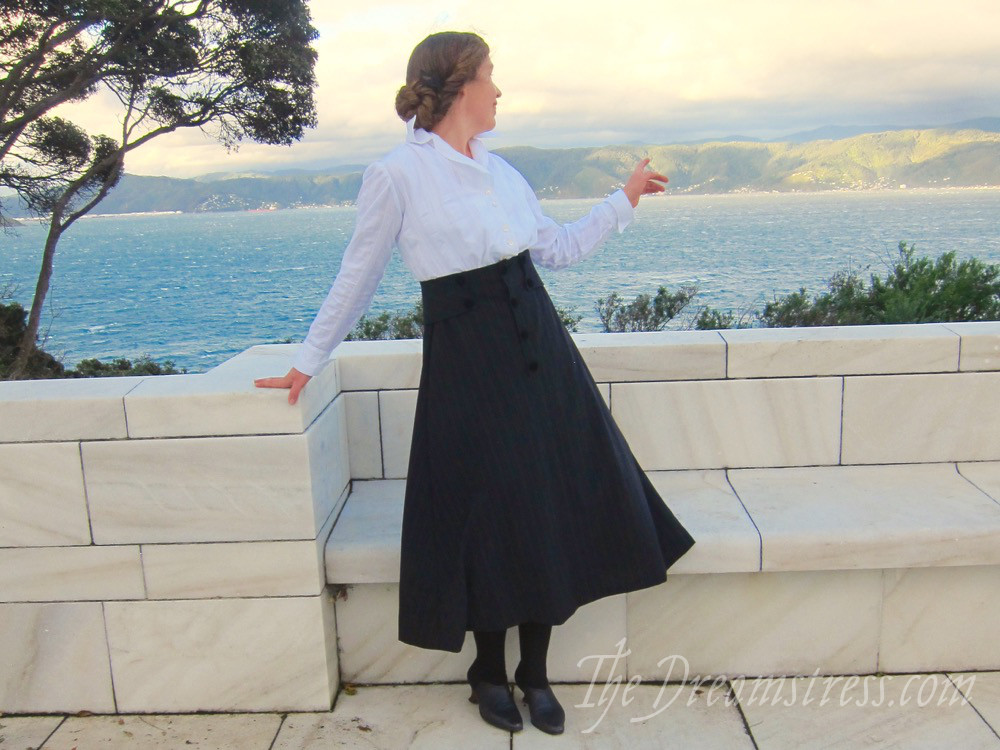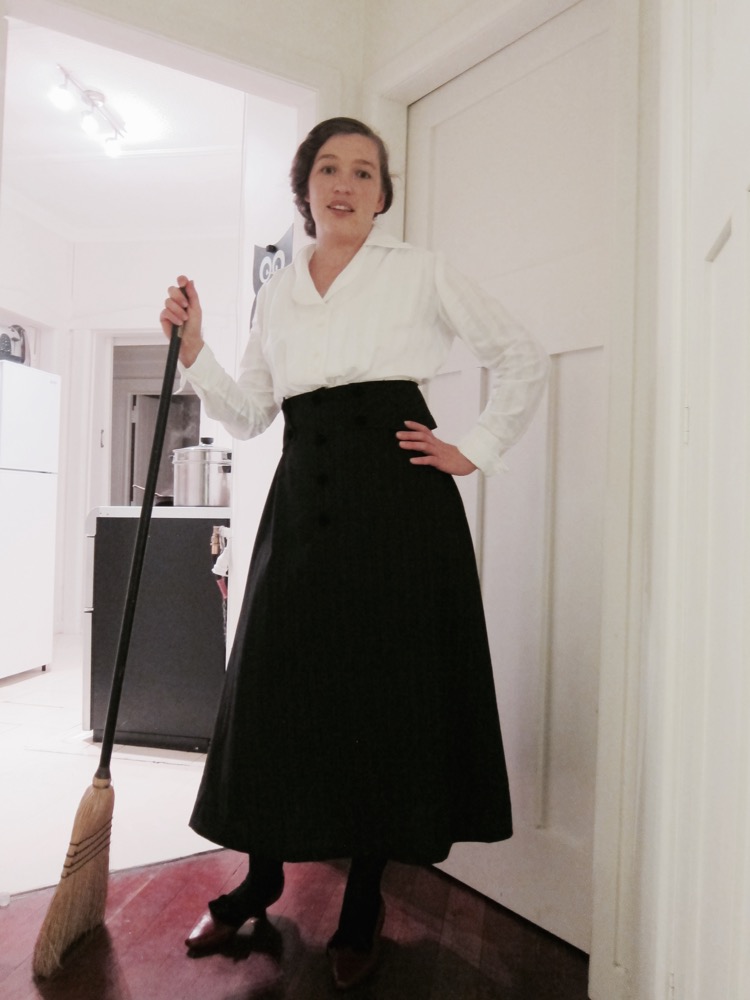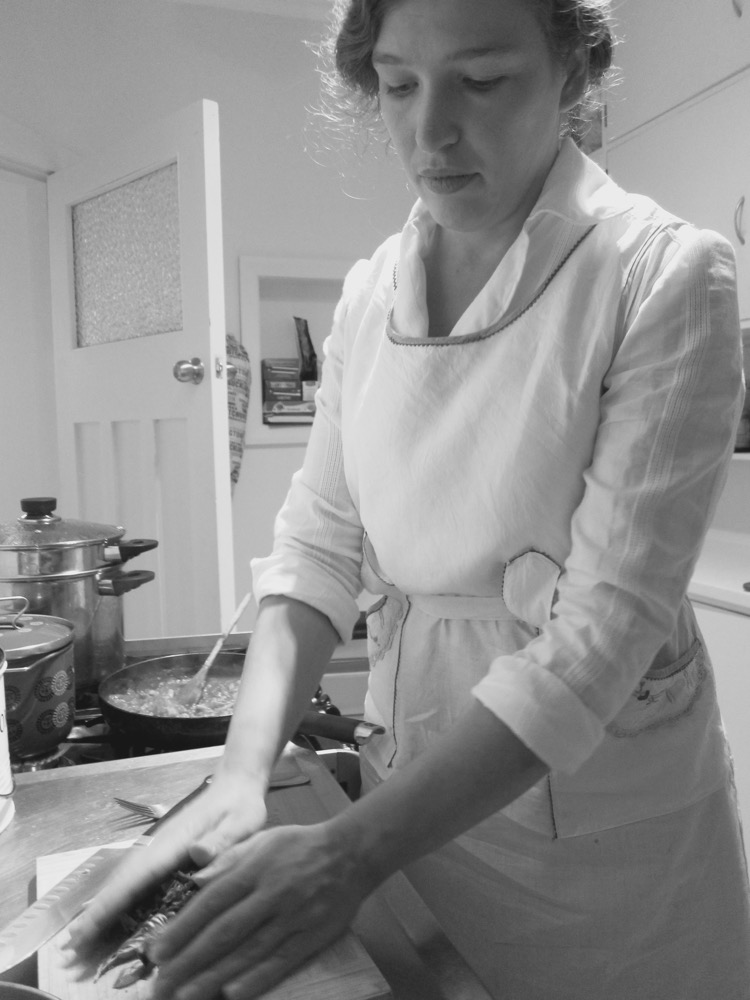In creating the ‘Fortnight in 1916’ project, I’ve developed a set of general guidelines and rules for how historically accurate it should be.
First, the two most important rules:
#1 – I’m not allowed to do anything that will endanger my health.
This one is pretty obvious. I’ve run the project by my doctor, I’ll have a checkup before I do it, and if anything seems to be going wrong, I have to modify or pull the plug on it.
I don’t handle winter very well. I get really terrible chillblains, so my clothing and our house heating has to do as much as possible to alleviate them, 1916 or otherwise. I also had a really serious lung infection this autumn, and while 4 weeks in Hawaii seems to have effected a complete recovery, I can’t afford another bout of it.
I’ve chosen to live circa 1916 in the middle of winter because winter is already miserable, so it can’t be any worse in wool stockings and a corset, and I already spend 6 months of the year in wool socks, so I draw the line at wearing them at any point in the year when I don’t absolutely have to, but it is a slightly risky time of year.
#2 – The project must not negatively impact on Mr D.
Mr D accepts my weird interests, but they definitely aren’t his, and it’s not fair of me to completely hijack his life for two weeks just because I’ve decided to do this. So, even while I’m living in 1916, he needs to be able to live in 2016, which means that I can’t completely disable the TV for the fortnight (darn it), and meals still have to involve huge amounts of vegetables (yay!), though, of course, that doesn’t necessarily mean I get to eat them (boo 🙁 ).
With those out of the way, the more general guidelines:
Clothing:
I’ll be dressing entirely in reproduction 1916 clothing for the fortnight, from the skin out, day and night.
Where exact replicas can’t be obtained, it’s most important that my clothes act as much like ca. 1916 items as possible, even if they don’t look as period as other option – i.e. a shoe that fits and hugs the foot like a 1910s shoe is more important than one the superficially looks like a 1910s shoe.
Food:
My diet will represent a plausible mid 1910s middle-class NZ diet, rather than what may have been the most common diet of the time. Switching to a totally middle-of-the-road 1910s (or, for that matter, modern American) diet will completely throw my body for a loop, which won’t yield an accurate representation of what life was like, so I’m sticking to something that is period, but is a lot closer to how I eat now. My research indicates that by 1916 people were eating less meat due to the war (which may have been disappointing to them, but is a great relief to mostly-vegetarian me), and lots of lentils (yay!). I’ve been delighted to find vegetarian menus and recipe suggestions in 1910s NZ newspapers too, so those will feature in my cooking.
I’ve decided that I can eat any meat, vegetable, legume, grain, spice, seasoning etc that I can find mentioned in a recipe, menu column, gardening article etc in a NZ newspaper from 1900-1918, or in a cookbook or book that can be documented as in use in NZ at the time. In the spirit of WWI home gardens (yes, they were a thing) I can also eat any vegetable I can grow in my garden in Wellington at this time of year.
The one serious exception to the diet is that we eat venison stew with kai choi (Chinese mustard) once a week, and Mr D will not be happy if that disappears. The ingredients may be a little exotic, but the style of cooking is still very much in the spirit of 1916, so I don’t feel it’s too far off.
House:
We live in a mid 1920s house. I can’t change that. However, the room layout, with lots of small rooms and no open-plan, is more like an earlier house than a modern one, so how we live in it will still match how you would live in a 19th or early 20th c house.
Like houses in 1916, and in common with far too much of the housing in NZ, our house has no insulation, no double glazing, and no central heating. In fact, except for a bit more electricity, our house isn’t measurably more comfortable than it would have been in 1910.
Transport:
Transport is a real problem. The obvious answer is public transport, which is what would have been used in 1916, but Wellington, like many, many cities around the world, has significantly worse public transport today than it did during WWI. Because of this (and also the part where I’m often carrying two sewing machines around with me), I can’t catch buses to work, because I’d get home at almost 10 at night, instead of at 9.
My compromise will be to walk and bus whenever possible (I can walk to the supermarket – yay!), and to not drive out of the small circle that would have been easily accessibly by the Wellington trolley system in 1910 for the duration of the fortnight.
Work:
Because I’m self-funding the project, I still need to be able to work. Luckily, I’ve picked the perfect period for this. During WWI many middle class women were working for the first time, taking on clerical work to replace men who were overseas fighting, and extending the organisational work they had done on church and social committees to a much bigger level as part of the war effort.
I’ll be re-framing the usual work I do within these contexts: I’ll confine computer work to a set timeframe within the day, as a stand-in for a clerical job. I’ll be blogging a journal of my experiences and insights in lieu of a written journal, and answering emails in lieu of correspondence, which was an important part of a WWI housewife’s weekly routine, as it was the main form of contact with friends, relatives, and spouses overseas and in other towns. My evening sewing classes will fill the same function as planning meetings, socialising and classes would have for a Wellington woman in 1916.
The Internet:
Obviously if I’m blogging and answering emails, I’m not entirely off the internet for the period. I’d really like to be, but it’s not practicable at this point. However, I am setting myself strict guidelines:
- Two email checks at set times in a day, taking no more than 1 hour in total.
- 1 hour of online research is allowed every three days, to answer any questions that may have come up.
- 10 minutes of FB a day, to post a link to my blog posts, and to deal with any issues in the HSF FB group and other groups I manage.
- 1 minute of Twitter a day, to post a link to blog posts
- No browsing, surfing, and clicking on random articles.
- When I answer an email or write a blog post, that’s ALL I do. Nothing on in the background, no extra tabs, etc.
It’s going to be an interesting fortnight…




Such a grand idea! Looking forward to your posts!
Such a grand idea! Looking forward to your posts! FF
So, I have a question about food: I know in Hawaii, that it was possible for European-descended population to eat the local (and Asian) food. What about NZ? Or was food also segregated?
All your guidelines sound reasonable. Looking forward to following. Have fun!
What a great plan! Looking forward to hearing how it all pans out!
You have made an excellent plan! I’ll be reading along!
This is so interesting! Looking forward to hearing more about your 1916 wardrobe and just the experience overall.
Glad to hear it wasn’t mutton chops every day. I presume you have an electric stove rather than a coal range? Are there any other kitchen mods?
One big change to your house, I hope, is that you’ll have an inside toilet. Or would the middle classes have had this in 1916? Many pre-1920 houses I’ve been in had a flushing loo but you had to go outside and along the porch to get to it. I don’t know when they were brought inside, but I’m pleased about it. Good luck!
Far, far worse than mutton chops every day. Boiled mutton!
We have a gas stove. I’d love to do this with a coal range, but for now, a gas stove that works very badly is going to have to do.
I’ll be posting more about house details, so will cover things like loos.
Very, very excited about this!
Also, you may want to consider using Hootsuite or Tweetdeck to schedule tweets. Both are free and easy to use.
Can’t wait to follow along on your time travelling.
Fascinating project, I’m looking forward to reading your posts.
Sounds like a great project! I am really looking forward so reading you posts. How are you going to deal with the washing? I was telling my husband about this project of yours and that was his first question. 🙂 I am really curious about the project! 🙂
I’m excited to read what you post about this experience.